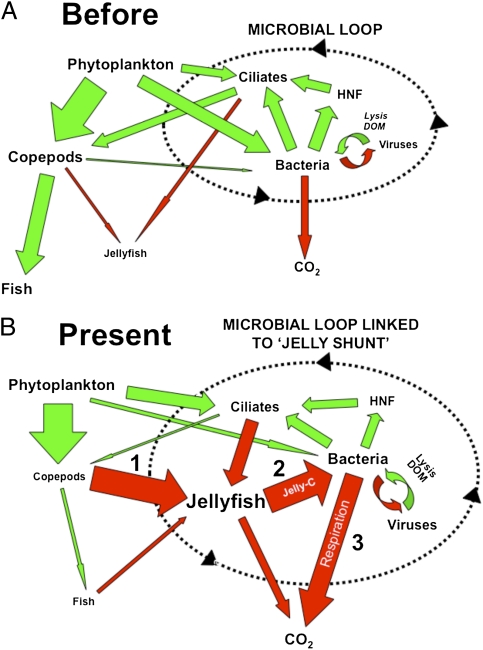Fig. 4.
The “jelly carbon shunt.” Hypothetical changes in C pathways within the planktonic food web (A) before and (B) after (present) increases in jellyfish blooms. Green arrows indicate flows reincorporating C into the planktonic food web and potential transfer to higher trophic levels. Red arrows signify C pathways impacted by jellyfish. The size of the arrow indicates relative magnitude of C flow, and the size of the text indicates relative size of C pool. The direct link and increased influence of jellyfish and microbial pathways are emphasized by (i) the shunting of C away from fish production, (ii) the conversion of C into jellyfish biomass and subsequent release in excretia jelly-C, and (iii) utilization of jellyfish material for bacterial metabolism, especially respiration. The “jelly loop” involves the cycling of C between jellyfish, bacteria, heterotrophic nanoflagellates (HNF), and ciliates.

